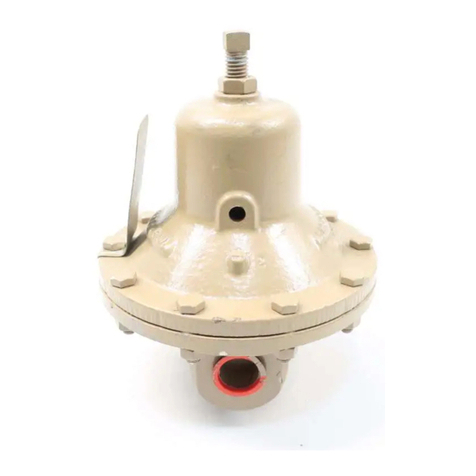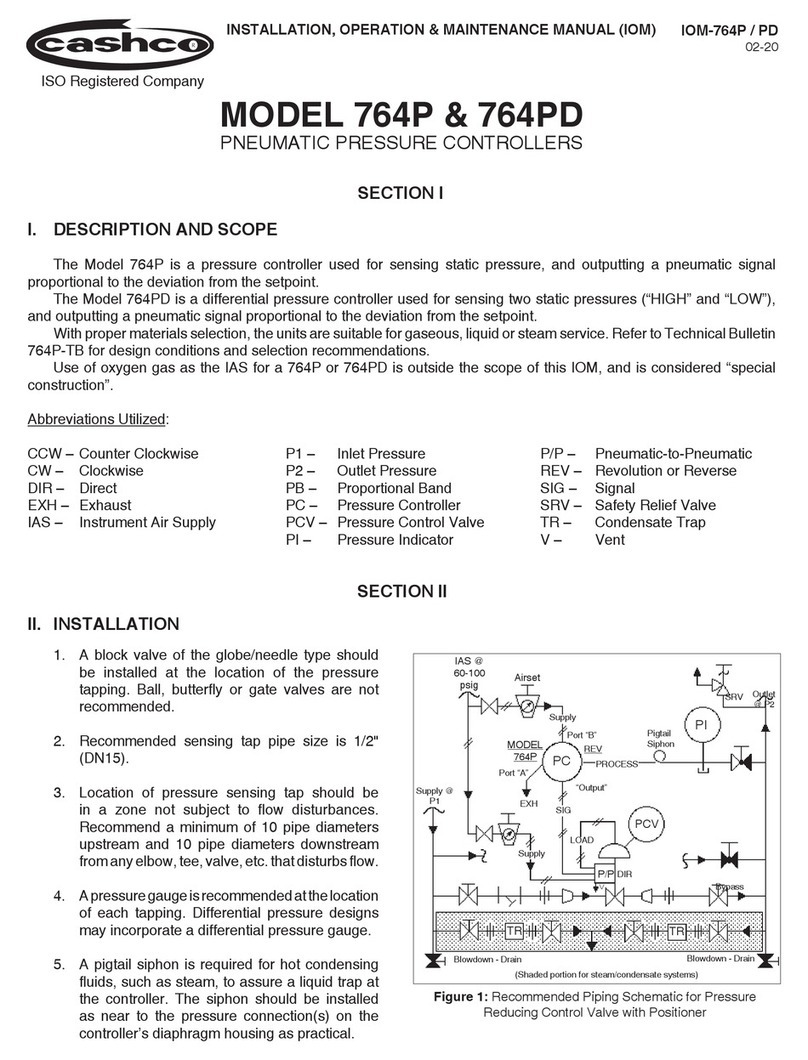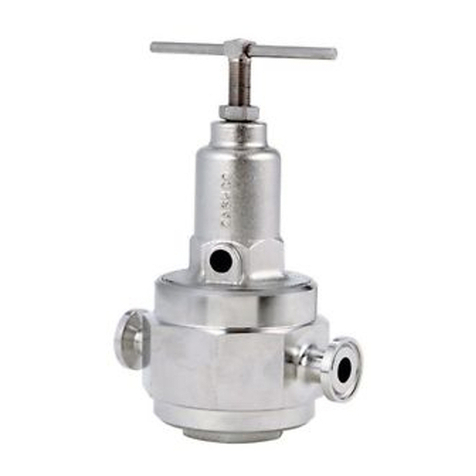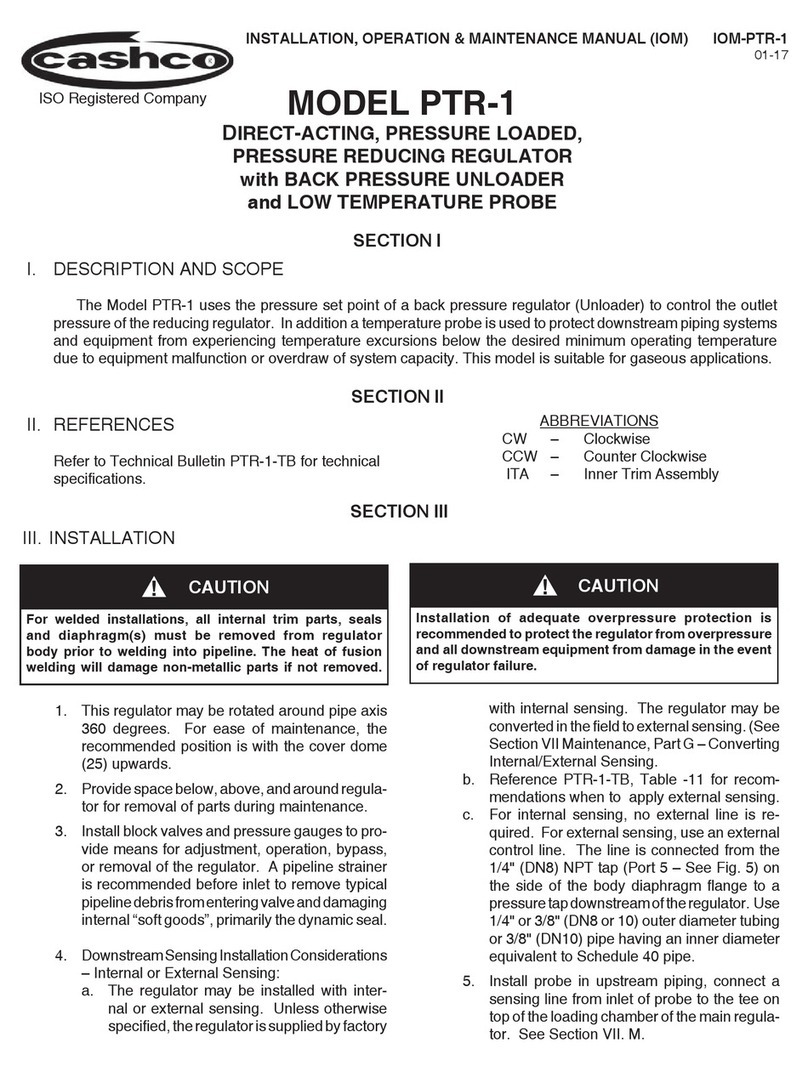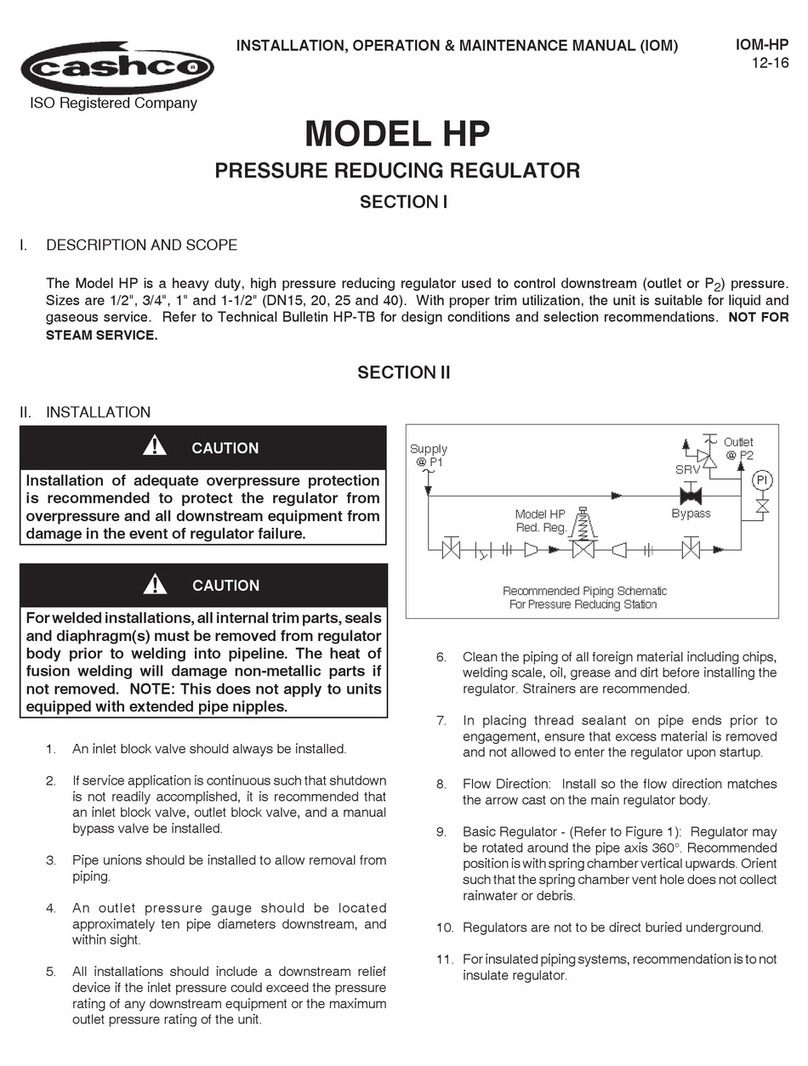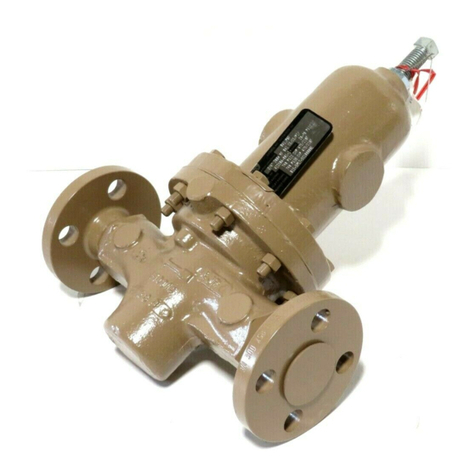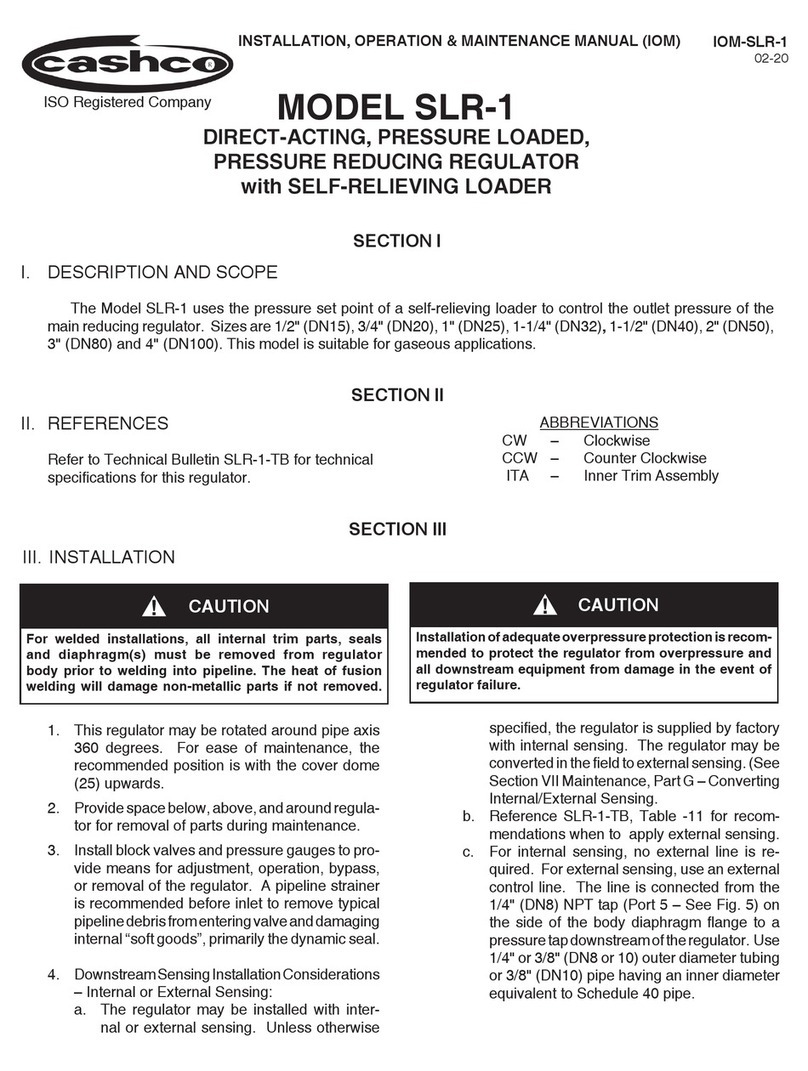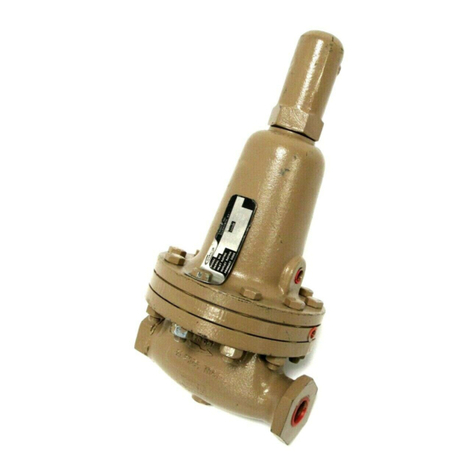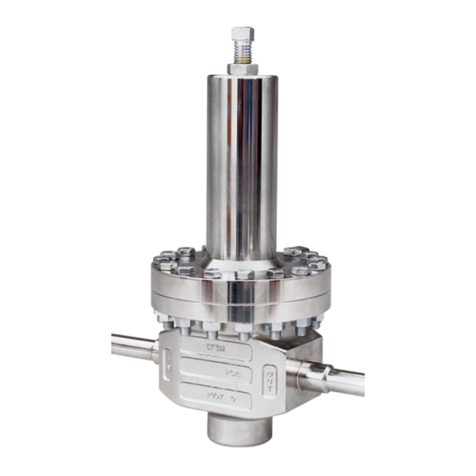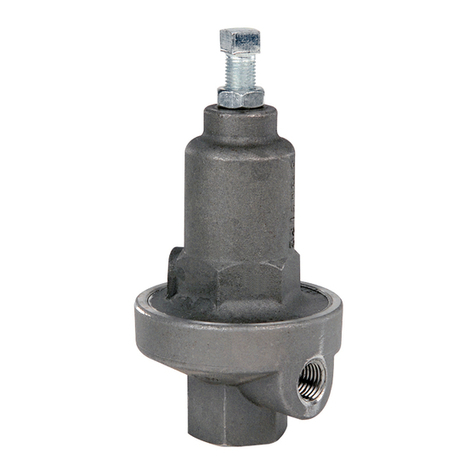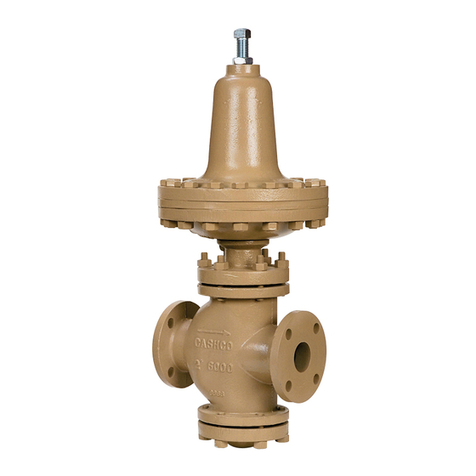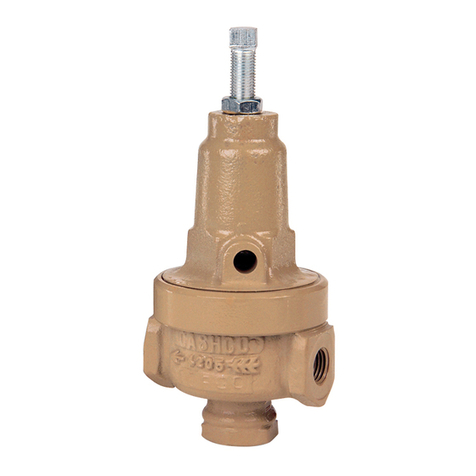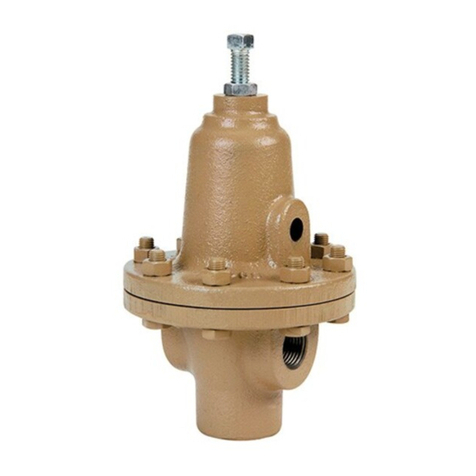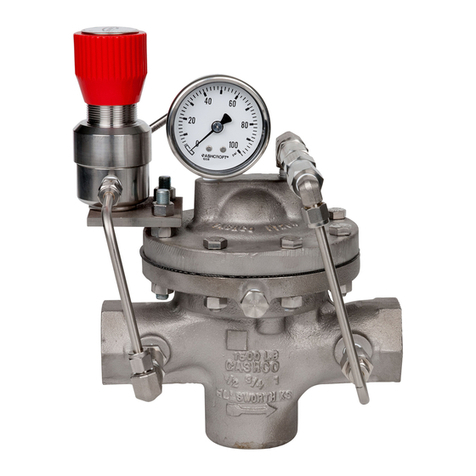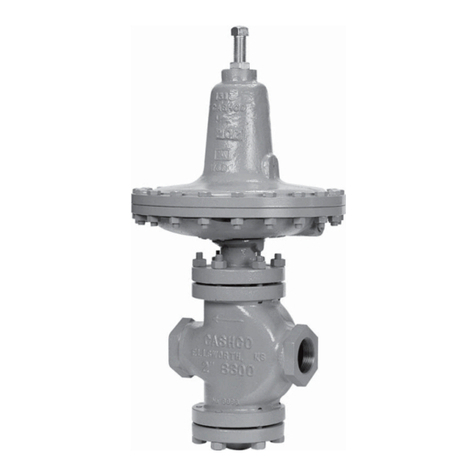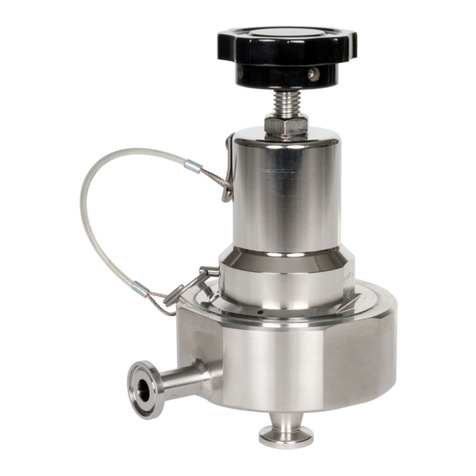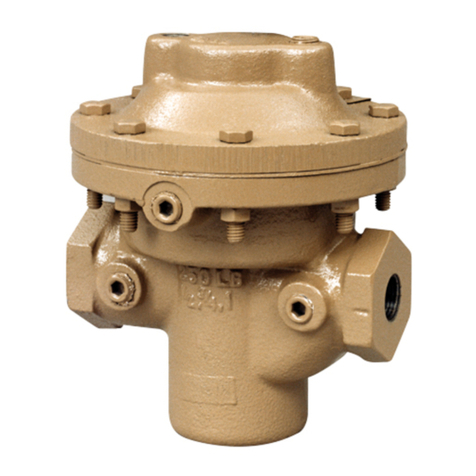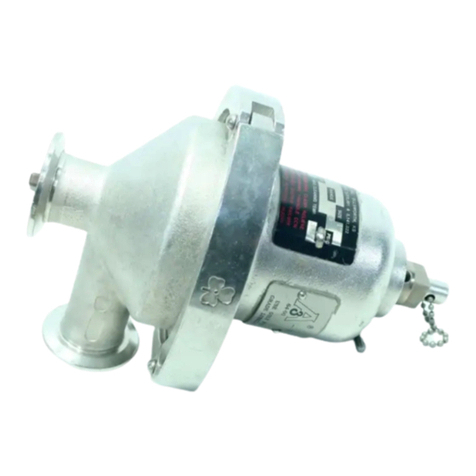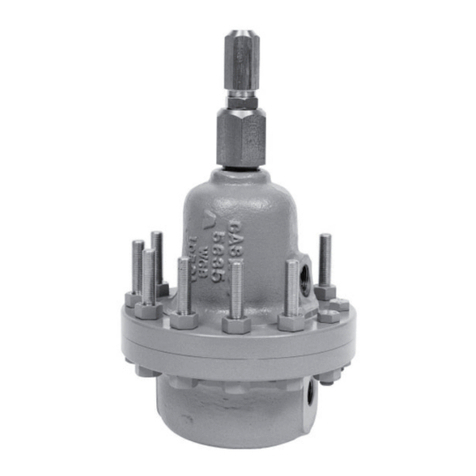
IOM-DA8
10
5. Insert cage (19) into body (23) recess. Properly
align all three cage bolt (18) holes as there is
only one circumferential location possible for
this alignment. Engage all of the cage bolts
(18), then evenly screw in the cage bolts in
one-half revolution increments, taking care
NOT TO “COCK” THE CAGE (19) IN THE
BODY. Torque the cage bolts (18) to 13-15
ft-lbs. For 1/2"-2" full support design, fit support
plate (35) into body counter bore.
6. Lubricate and install o-rings (34) into grooves
on the adjusting screw (1).
7. Assembly of range spring and spring chamber
for DA8:
a. Lubricate the threads of adjusting screw
(1) then thread into the spring follower (5).
The spring follower should be threaded
up adjusting the screw to within 3/8" of
the top threads (see sectional drawing,
figure 5.
b. Insert adjusting screw-spring follower into
spring chamber (4). NOTE: Milled slots in
spring follower must align with ribs in the
bore of the spring chamber. The top of
the adjusting screw must fit in the center
hole of spring chamber. A light rap with
a wooden handle of a hammer may be
needed to fully install the adjusting screw
into the spring chamber.
c. Aligning match marks and bolt holes,
place spring chamber (4) over range
spring (6.1). If the spring chamber
flange reaches the body flange without
a gap, turn adjusting screw (1) CW 2-3
turns. Repeat this procedure until the
flanges are approximately 1/8" apart.
Be sure that range spring is properly
seated into counterbore on spring follower.
8. Assembly of range spring assembly and spring
chamber for DA9:
a. Lubricate the threads of adjusting screw
(1), then thread into the range spring
assembly (6.2). The adjusting screw
should be threaded sufficiently into the
range spring assembly to allow easy fit-
ting of the spring chamber (see sectional
drawing, figure 6).
b. Thread the lower end of the range spring
assembly to the top of the valve plug. At
least three good threads of engagement
are required between the range spring
assembly and the valve plug. Back off
range spring assembly a fraction of the
turn to align the milled slots perpendicular
to the center line of the valve body. The
slots should now be ready to accept the
internal ribs of the spring chamber.
c. Aligning match marks and bolt holes
place spring chamber (4) over range
spring assembly (6.2). If the spring cham-
ber flange reaches the body flange with-
out the adjusting screw passing through
the center hole of the spring chamber,
then remove the chamber. Holding the
range spring assembly stationary, turn
the adjusting screw CW 2-3 turns or
as required so the top of the screw will
pass through center holes of the spring
chamber. After the top of the adjusting
screw passes through the center hole of
the spring chamber, continue to turn the
adjusting screw CW until the adjusting
screw is fully fitted into the spring cham-
ber. DO NOT allow the spring chamber
to rotate or the range spring assembly
may disengage from the valve plug.
d. Fit the locknut (2) to the top of the adjust-
ing screw. DO NOT over tighten the first
locknut. The adjusting screw should turn
freely in the spring chamber. Lock the
second locknut against the first locknut.
Again, check that the adjusting screw
turns freely.
9. Reinstall all flange bolts (11) and nuts (12)
with nameplate (99) located under one bolt
head. Hand-tighten nuts (12).
NOTE: If a six-ply diaphragm is being used,
it is important that the diaphragm (9) is “pre-
formed” – allow formation of a diaphragm (9)
convolution. Starting with the body bolts and
nuts (11,12) hand tightened, “preforming” can
be accomplished by any one of the following
techniques:
a. Relax range spring fully by rotating ad-
justing screw CCW.
b. Apply 30 psig (2.1 Barg) pressure to the
valve outlet.
OR
Block the valve outlet and apply 30 psig
(2.1 Barg) under the diaphragm through
the 1/4" NPT (plugged) external pres-
sure sensing connection on the valve
diaphragm flange.
c. Leave pressure on through tightening
of bolting (11,12).
10. Evenly tighten the body bolting (11,12) in an
alternating cross pattern in one revolution
increments to the following torque value:
Body Size
in (mm)
Torque
ft-lb (N-m)
1/2" - 2" (DN15-50) 30-35 (41-47)
2 1/2" - 4" (DN65-100) 45-50 (61-69)
